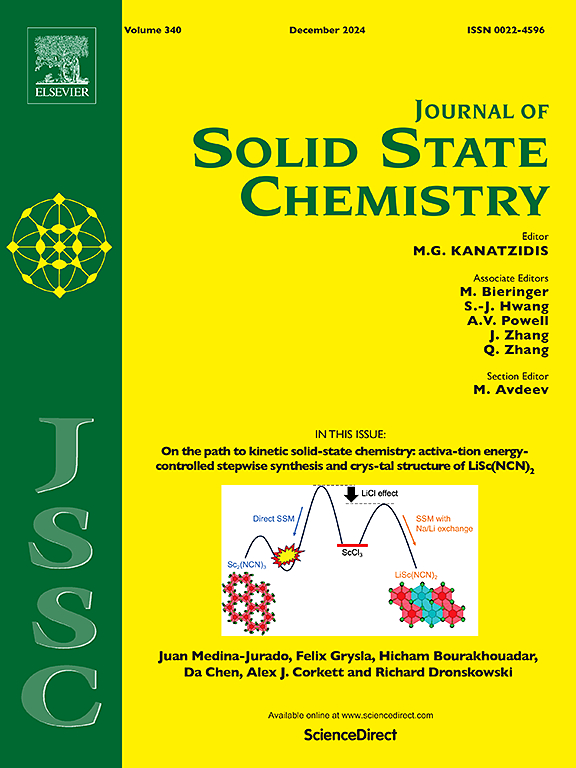Crystal growth and magnetic evolution of antiferromagnetic topological insulator Zn-doped MnBi2Te4
IF 3.2
3区 化学
Q2 CHEMISTRY, INORGANIC & NUCLEAR
引用次数: 0
Abstract
As the first intrinsic magnetic topological insulator, MnBi2Te4 has provided a material platform for the realization of various novel physical phenomena arising from the interaction between magnetism and band topology. Here, transition element Zn-doped MnBi2Te4 crystals of millimeter size, synthesized by using self-flux method, are reported. With increasing Zn content, the hexagonal lattice shrinks, and the Raman frequencies show a red shift. All samples undergo a transition from A-type antiferromagnetic (A-AFM) to canted antiferromagnetic (CAFM) to ferromagnetic (FM) under magnetic field. The antiferromagnetic ordering temperature slightly increases from 24.2 K for MnBi2Te4 to 25.2 K for Mn0.75Zn0.25Bi2Te4. The transition field from AFM to CAFM decreases from 3.4 T for x = 0–3.07 T for x = 0.25. Isothermal magnetization data suggest that the single-ion anisotropy of Mn2+ decrease and the interlayer magnetic interaction increase slightly due to the diluted magnetic ions and unit cell shrinkage. Samples Mn0.9Zn0.1Bi2Te4 and Mn0.8Zn0.2Bi2Te4 show metallic conduction with a cusplike anomaly at around TN ≈ 24 K, corresponding to a long-range antiferromagnetic (AFM) transition. The increase of TN and decrease of transition field () upon Zn doping, make it possible to manipulate magnetic and electrical properties in topological insulators by non-magnetic element substitution, which is of great significance for further application in quantum information storage and spintronics.

求助全文
约1分钟内获得全文
求助全文
来源期刊

Journal of Solid State Chemistry
化学-无机化学与核化学
CiteScore
6.00
自引率
9.10%
发文量
848
审稿时长
25 days
期刊介绍:
Covering major developments in the field of solid state chemistry and related areas such as ceramics and amorphous materials, the Journal of Solid State Chemistry features studies of chemical, structural, thermodynamic, electronic, magnetic, and optical properties and processes in solids.
 求助内容:
求助内容: 应助结果提醒方式:
应助结果提醒方式:


